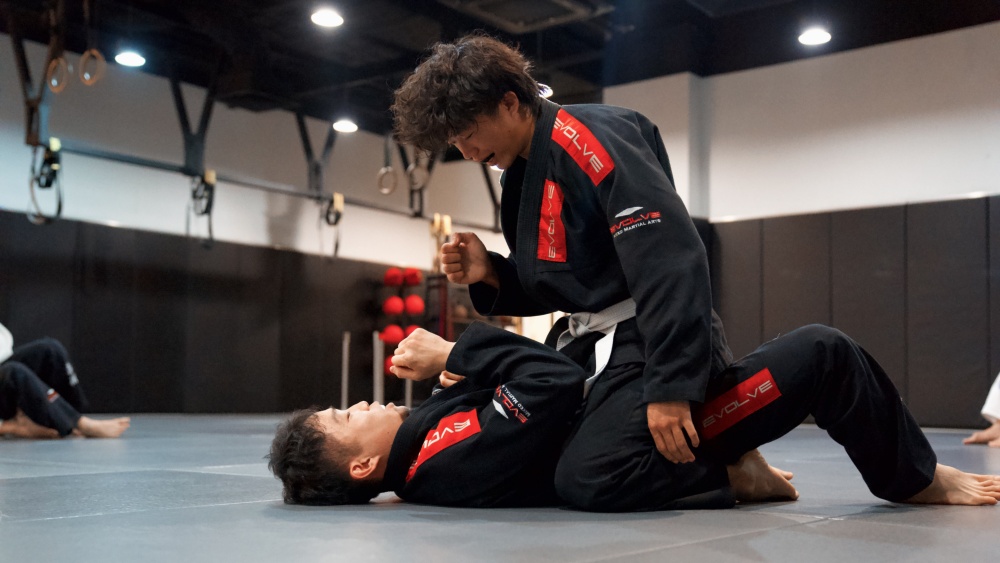Modern Warrior Combatives and Jiu Jitsu in Dothan, AL, brings you this guide on flexibility for Jiu Jitsu. If you want to improve your skills on the mat, flexibility is very important. It helps your body move better, avoid injuries, and react faster.
What Is Flexibility?
Flexibility means how much your muscles and joints can bend or stretch. If your body is flexible, you can do many moves without pain. In Jiu Jitsu, you need to twist, turn, and stretch in many ways. Being flexible makes these moves easier.
Why Is Flexibility Important in Jiu Jitsu?
Jiu Jitsu is a martial art where you use holds, locks, and positions to control your opponent. Here are some reasons why flexibility matters:
- Better Movement: You can move faster and smoother.
- More Range of Motion: You can reach and hold positions easily.
- Injury Prevention: Flexible muscles are less likely to get hurt.
- Improved Technique: Some moves need your body to bend in special ways.
- Quicker Recovery: Your muscles get less sore after training.

Which Parts of the Body Need Flexibility?
In Jiu Jitsu, some body parts need more flexibility. Here are the main areas:
| Body Part | Why It Is Important |
|---|---|
| Hips | Helps with guard positions and leg locks. |
| Shoulders | Needed for arm bars and escapes. |
| Lower Back | Allows better twisting and bending. |
| Hamstrings | Supports leg movements and guard passes. |
| Neck | Helps protect against chokes and holds. |
How to Improve Flexibility for Jiu Jitsu
Improving flexibility takes time. You must be patient and practice regularly. Here are some simple steps to get more flexible:
1. Warm Up Before Stretching
Stretching cold muscles can cause injuries. Always warm up first. You can jog in place or do light jumping jacks for 5 minutes. This makes your muscles ready to stretch.
2. Stretch Daily
Try to stretch every day. Even 10 minutes helps. Focus on the body parts you use most in Jiu Jitsu.
3. Use Different Types Of Stretching
There are many ways to stretch. Use these types for better results:
- Static Stretching: Hold a stretch for 20-30 seconds. For example, touching your toes and holding.
- Dynamic Stretching: Move your limbs gently through their full range. Like leg swings or arm circles.
- PNF Stretching: A special method involving muscle contraction and relaxation. It often needs a partner.
4. Focus On Hip Flexibility
Hips are very important in Jiu Jitsu. Try these exercises:
- Butterfly stretch: Sit, bring feet together, and press knees down.
- Pigeon pose: Stretch one leg back and bend the other in front.
5. Improve Shoulder Mobility
Shoulders help in many moves. Try these:
- Arm circles: Small and big circles to warm up shoulders.
- Wall slides: Stand against a wall and slide arms up and down.
6. Stretch Your Lower Back
A flexible lower back helps with twists and bends. Try:
- Cat-cow stretch: On hands and knees, arch and round your back.
- Seated twist: Sit and twist your upper body gently to each side.
7. Don’t Forget Your Neck
Neck flexibility helps protect you. Try slow neck circles and side bends.
Tips for Safe Stretching
To avoid injuries, follow these tips:
- Never stretch to pain. Mild discomfort is okay, pain is not.
- Hold each stretch gently and breathe slowly.
- Don’t bounce while stretching. Move slowly and smoothly.
- Be consistent. Flexibility improves with regular practice.
- Listen to your body. Rest if you feel too sore.
Flexibility and Training Together
Flexibility is just one part of Jiu Jitsu training. Combine it with:
- Strength training: Strong muscles support flexible joints.
- Cardio exercises: Good endurance helps you keep moving.
- Technique drills: Practice moves slowly and carefully.
When you mix flexibility with these, your Jiu Jitsu improves steadily.
How Flexibility Helps in Real Jiu Jitsu Moves
Let’s see some examples where flexibility is useful:
| Move | Why Flexibility Matters |
|---|---|
| Triangle Choke | Needs flexible hips to lock legs around opponent’s neck. |
| Armbar | Flexible shoulders and hips help finish the move safely. |
| Guard Position | Good hip and hamstring flexibility keep guard tight. |
| Escapes | Flexibility lets you twist and turn out of holds. |

Credit: evolve-mma.com
Flexibility for Everyone
Flexibility is not only for adults or experts. Kids and beginners also need it. When you start Jiu Jitsu, do simple stretches. This helps your body grow strong and healthy.
Older students benefit too. Flexibility helps reduce stiffness and keeps you moving well.
Frequently Asked Questions
Why Is Flexibility Important For Jiu Jitsu Training?
Flexibility helps you move smoothly and avoid injuries during Jiu Jitsu practice.
How Does Flexibility Improve Jiu Jitsu Techniques?
Better flexibility lets you perform holds and escapes with less effort and more control.
Can Stretching Increase Jiu Jitsu Flexibility Fast?
Regular stretching improves flexibility over time; quick changes are rare but possible with daily effort.
What Are The Best Stretches For Jiu Jitsu Flexibility?
Focus on hip openers, hamstring stretches, and shoulder mobility exercises for best results.
Conclusion
Flexibility is a key part of Jiu Jitsu success. It makes your moves easier and safer. It helps you avoid injuries and recover faster. Practice stretching daily. Focus on hips, shoulders, back, and neck. Be patient and consistent. Combine flexibility with strength and technique training.
If you are in Dothan, AL, come visit Modern Warrior Combatives and Jiu Jitsu. We help students of all ages improve their skills safely.
Remember, flexibility takes time. Keep working at it. Your body will thank you on the mat.







